Key points:
- Modern websites need more than static pages; dynamic content is key for scalability.
- ACF simplifies custom data management, while Elementor’s drag-and-drop builder handles layout.
- Elementor natively detects ACF fields, making it easy to display data visually.
- Combining ACF and Elementor removes the need for custom code.
- Together, they can power scalable websites with flexible designs.
Most WordPress projects start simple but quickly grow more complex. Soon enough, you need better ways to manage content and design your pages. Advanced Custom Fields (ACF®) and Elementor work together to help you get past these challenges.
ACF makes it incredibly easy to organize and manage all kinds of custom content without diving into complicated code. Elementor, on the other hand, takes care of the design side of things. If you’re not comfortable working with code to create your layouts, you can simply drag and drop elements exactly where you want them.
When you bring these two tools together, something special happens. You get the perfect combination of flexible content management and powerful design capabilities. We’ll show you exactly how to make ACF and Elementor work together to build exactly the kind of website you’re after.
Understanding ACF and Elementor compatibility
Elementor integrates natively with ACF right out of the box. When you add custom fields to your site, Elementor automatically detects them and makes them available in your designs without any extra setup.
The integration supports most ACF field types. For example, when using an ACF Image field for team member photos, it shows up as an option right in Elementor’s image widget. The same goes for text fields, links, relationships – pretty much any custom field you create becomes available as dynamic content in Elementor.
Custom post types fit right into this workflow, too. Say you’re building a property listing site. You can create a template in Elementor specifically for your property post type. Once it’s set up, that template automatically applies to every property listing on your site.
Best of all, everything happens through Elementor’s visual interface. Your ACF data displays on the frontend without writing a single line of code.
Why use ACF with Elementor?
For sites built with Elementor, ACF offers a better way to handle specific content. Rather than stuffing everything into the main content editor, custom fields create a structured approach for managing things like product details, team profiles, or event information.
ACF also benefits from Elementor’s visual building tools. Instead of writing PHP code to display custom fields, Elementor provides a UI for placing that content exactly where it belongs on the page.
Supercharge Your Website With Premium Features Using ACF PRO
Speed up your workflow and unlock features to better develop websites using ACF Blocks and Options Pages, with the Flexible Content, Repeater, Clone, Gallery Fields & More.
How to integrate ACF and Elementor
Let’s cover the hands-on process of building a real estate listing site with ACF and Elementor. You’ll need Elementor Pro installed for this tutorial, as it includes the dynamic tags feature required for working with custom fields.
How to create a single-page template with ACF and Elementor
Here’s a step-by-step guide to create a template for property listings:
1. Create a custom post type for houses with ACF.
2. Add custom fields: address, bedrooms, bathrooms, size, price, and house photo. Use the relevant field type for each.
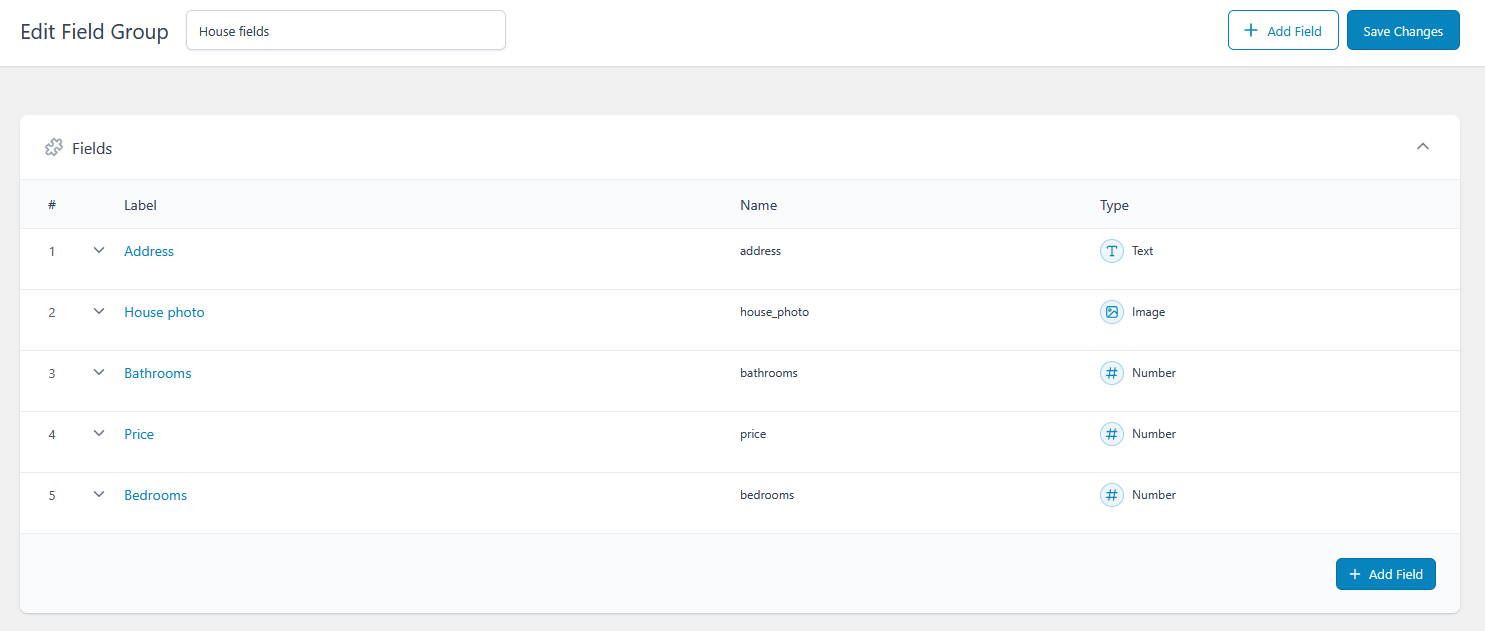
3. Go to Elementor > Templates > Add New.
4. Select Single Post as the template type and click Create template.
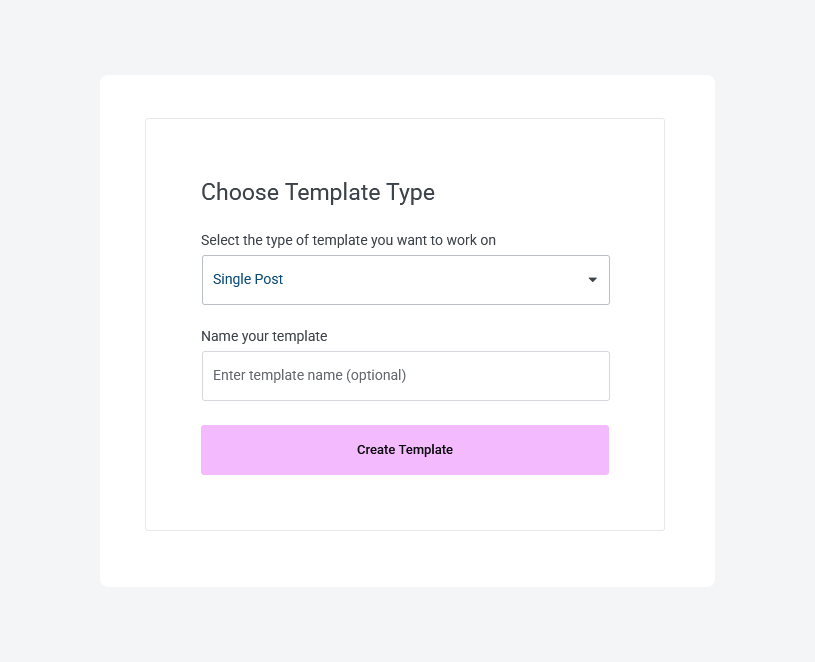
5. Select a template kit from the options that appear or close the popup to build one from scratch.
6. Create the layout you want for the template using the relevant widgets as you normally would.
7. When you’re ready, you can start integrating ACF data. Click the stacked discs icon on the widget’s settings to access the Dynamic Tags options, then select ACF Field.
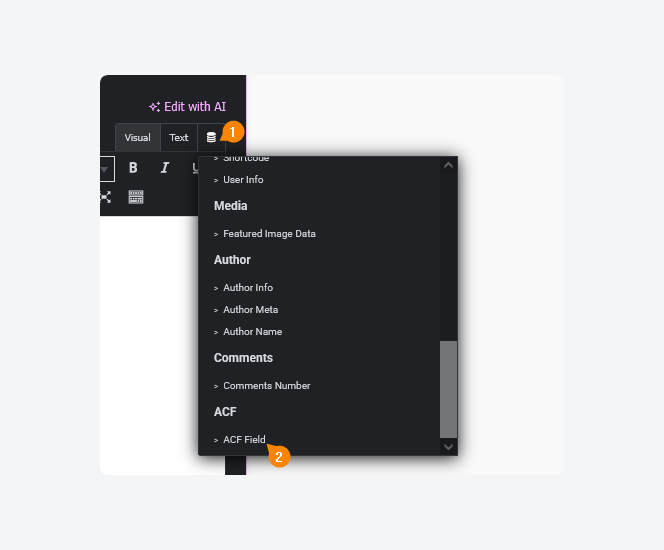
8. Click on ACF Field again and, under Key, assign the ACF field name to the matching widget.
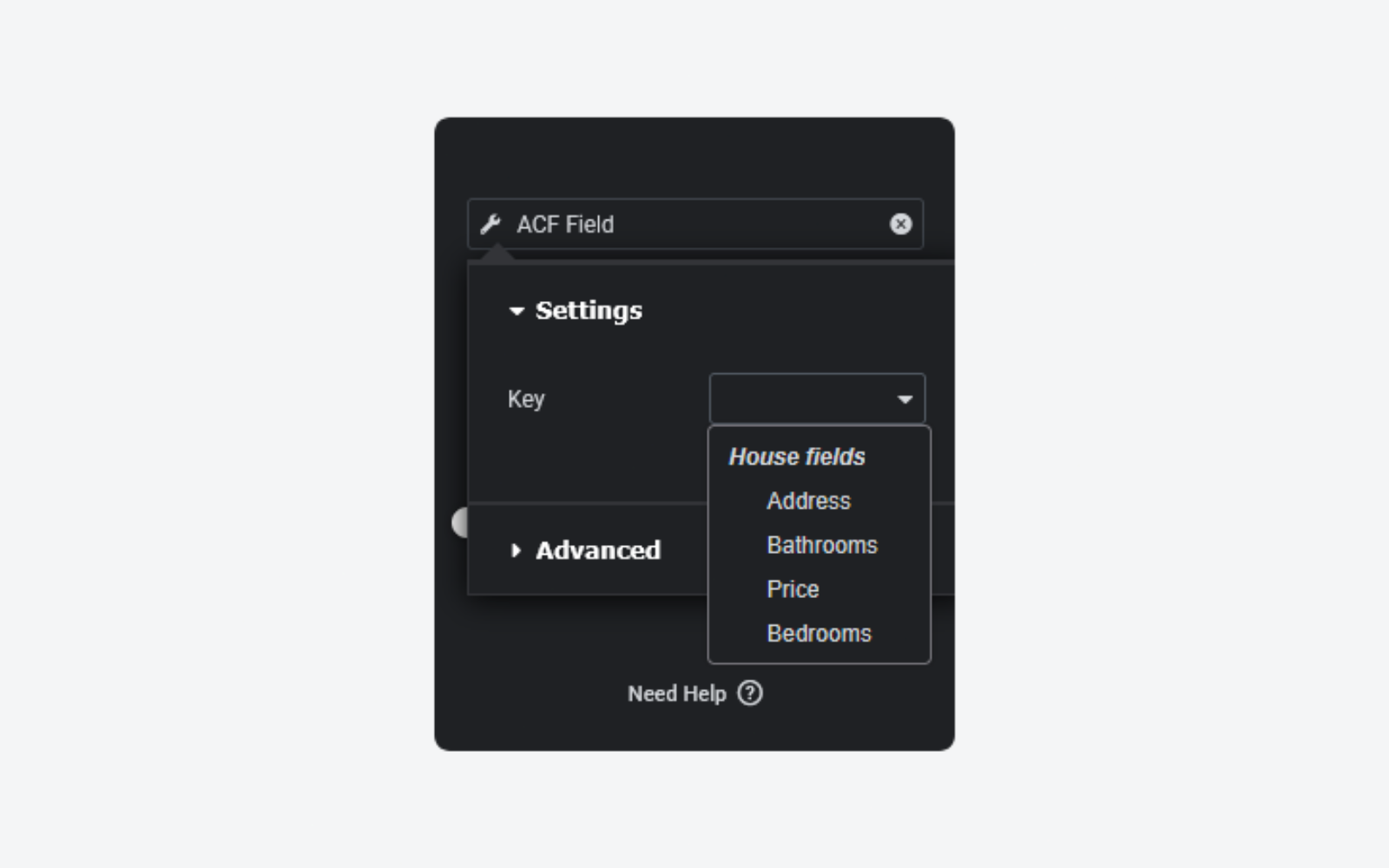
9. Under the Advanced tab, you can specify text that appears before and after the field values, as well as fallback text when the value isn’t present. For example, you can use “bedrooms” as the After text for the bedrooms field and “Price: $” as the Before text for the price. Don’t forget to add spaces where necessary.
10. When you’re done, click the arrow next to Publish at the top right corner of the page, then click on Display Conditions.
11. Add a new condition to include it in all Houses, then click Save & close.
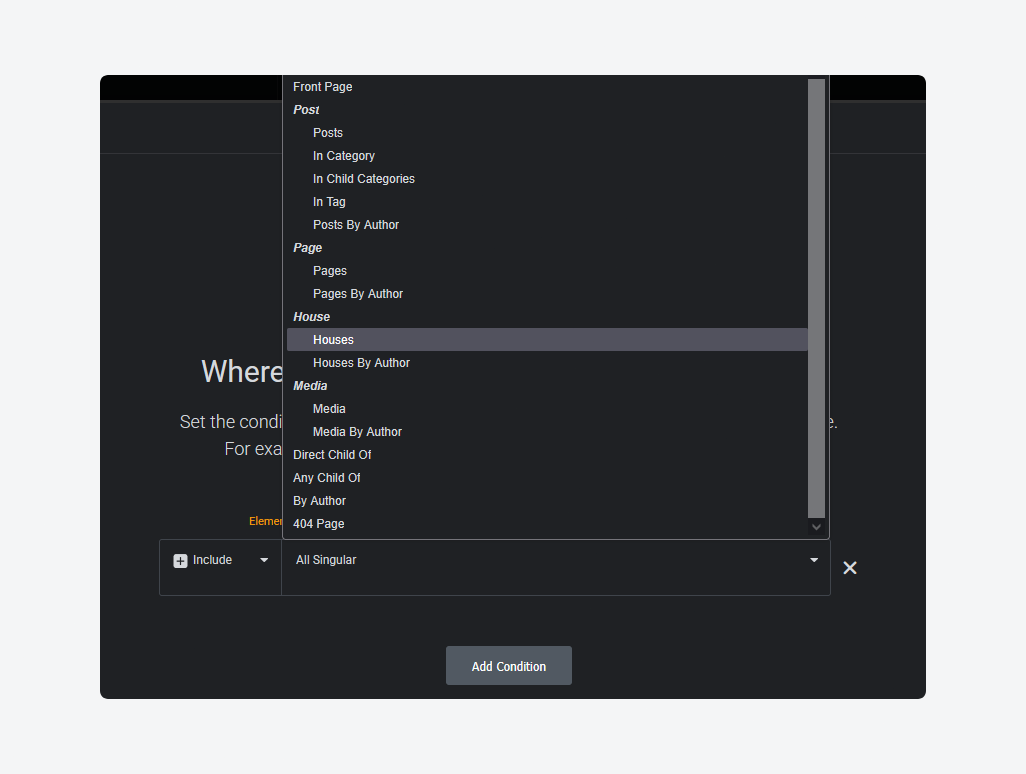
12. Exit the builder and add a new house from the dashboard via Houses > Add New.
13. Publish it and view it on the frontend, where you should see the template with the values populated.
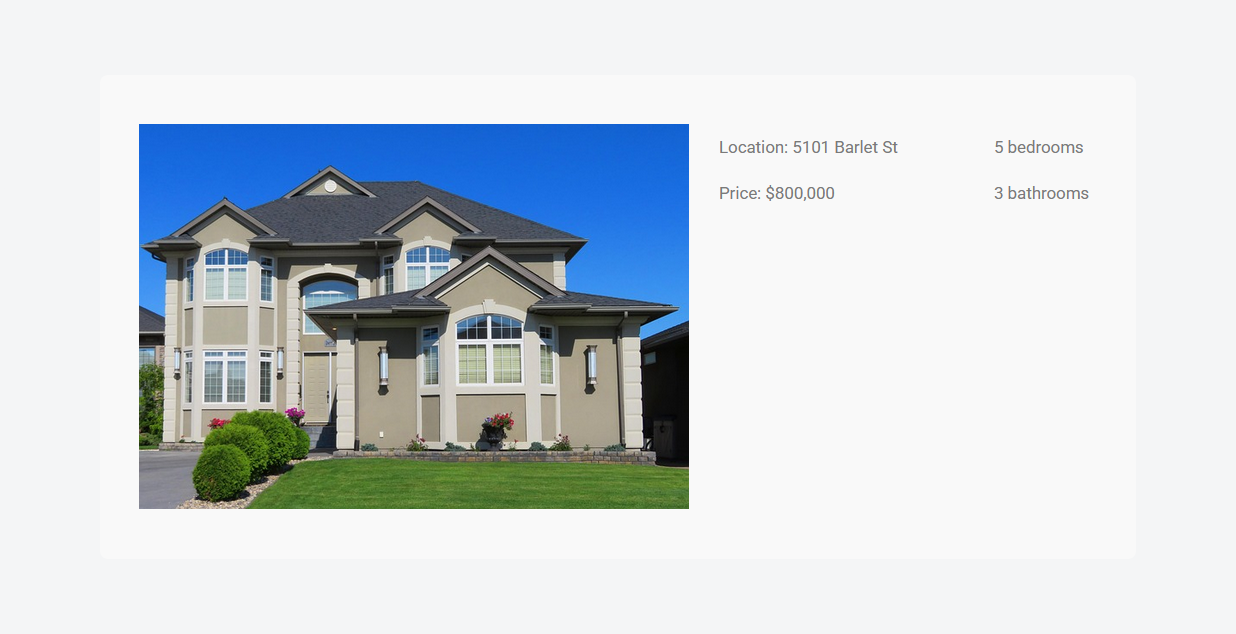
Advanced use cases for ACF and Elementor
The combination of ACF and Elementor opens up possibilities for all kinds of website projects. Here are some real-world examples of what’s possible:
Global site settings for corporate websites
Corporate websites often need consistent branding across every page. ACF’s Options Pages make this simple – store your logo, contact details, and SEO meta descriptions in one place, then use Elementor to pull this information into headers, footers, and other site elements. Update the information once, and it changes everywhere.
Visual content for travel and tourism
Travel and tourism websites come alive with ACF’s Gallery and Google Map fields. Picture a destination page that showcases multiple hotel photos in an interactive gallery, with a dynamic map showing exactly where each attraction is located.
Elementor displays these elements beautifully, creating engaging travel content that helps visitors plan their trips.
Dynamic landing pages for marketing
Digital marketing agencies often need flexible landing pages that adapt to different campaigns. ACF’s Flexible Content fields allow you to build a library of content modules, each with its own text, images, and styling options.
Elementor then arranges these modules into different layouts, making it quick to build campaign-specific pages that maintain brand consistency.
Personalized user dashboards
For membership sites and learning platforms needing personalized experiences, you can store and control what content each member sees using ACF’s Text, Select, and User fields with Conditional Logic. Elementor turns this data into dynamic dashboards that adapt based on user roles, progress, or preferences.
Advanced event registration forms
Event management becomes smoother with ACF’s form fields. Create registration forms using Date Picker fields for scheduling and Radio Button fields for meal choices. Add Conditional Logic to show or hide options based on previous selections.
Elementor’s Popup Builder can present these forms in an attractive, branded interface that keeps users engaged throughout the registration process.
Build better sites with Elementor and ACF
Building WordPress sites becomes much more straightforward when ACF and Elementor work together. The process is simple: ACF organizes your content with custom fields, while Elementor’s widgets display that content exactly where you want it.
This combination speeds up the entire website-building process. Instead of switching between code editors and preview screens, everything happens right in Elementor’s visual interface.
Plus, the setup works for any type of site. From basic blogs that need a bit more structure to complex directories with hundreds of listings, ACF and Elementor handle it all. Developers get the organized data structure they need, while designers have complete freedom to create without coding constraints.
Start building better WordPress sites today. Check out ACF PRO to see how it can enhance your workflow when paired with Elementor.

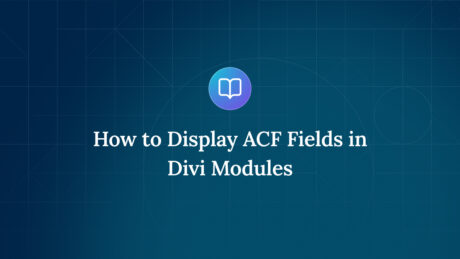
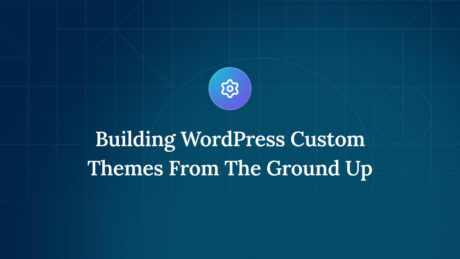
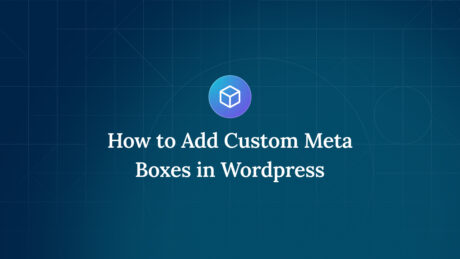

For plugin support, please contact our support team directly, as comments aren't actively monitored.